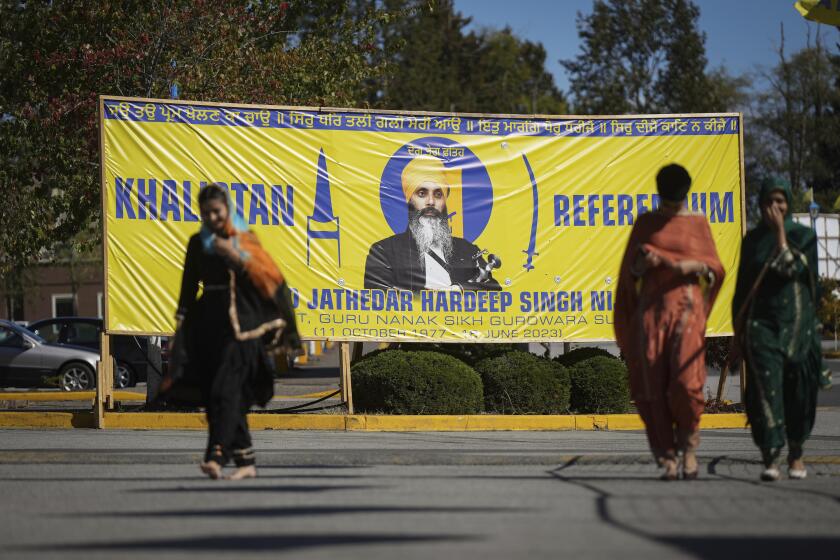Rare Photos Offer Glimpse of Scopes Trial
When historian Marcel C. LaFollette found several photographs and nitrate negatives labeled “Dayton June/July 1925” in a collection at the Smithsonian Institution Archives, it didn’t take long for her to figure out that she had stumbled across a piece of Americana.
She immediately asked a receptionist to call archivists Tammy Peters and Ellen Alers. Then she celebrated: “I’m 61, and I did a little dance,” LaFollette said.
“She did a jig,” Peters said. Alers described it as a “hip swish.”
What LaFollette had discovered were about 60 previously unpublished photos from the 1925 Scopes “monkey trial,” in which Dayton, Tenn., high school teacher John Scopes was charged with teaching the theory of evolution. Doing so was a violation of a Tennessee law, passed that year, permitting only the teaching of “Divine Creation of man as taught in the Bible” in the state’s public schools and universities. In an eight-day trial that dominated national headlines, Scopes was convicted and fined $100.
Most of the previously published images of the trial are news photographs taken inside the courtroom, photographs of reenacted scenes or posed portraits of key participants and celebrities. The ones LaFollette found are less formal.
“The significance of these photographs was that they were taken by journalists who are amateur photographers,” she said in an interview. “They are not news photographs, and so they have a certain spontaneity about them.”
One of them, taken on a day when the trial was moved outdoors because of the heat inside the courthouse, shows Clarence Darrow, Scopes’ lawyer and a famed defense attorney of his day, interrogating William Jennings Bryan, the prosecutor and three-time Democratic presidential nominee who led the antievolution movement in America.
“This new group of photos are compelling because ... any one of us could have taken them,” LaFollette said Wednesday during a talk sponsored by the American Assn. for the Advancement of Science. “These photographs provide a new perspective and add a human element to the trial.”
The photographs were in one of the 475 boxes -- 267 cubic feet in all -- donated to the Smithsonian in 1971 by Science Service, an organization founded in 1921 to promote science journalism. Most were taken by Watson Davis, the Science Service managing editor who covered the trial. Some are believed to have been taken by his colleague, Frank Thone.
Archivists said they believed that Davis did not plan to publish the photographs.
“I think he took them primarily for himself ... to document where he was, the setting and the people involved for his own reference,” Alers said. “As far as I can tell, they were not intended for publication.”
LaFollette had come to the Smithsonian in June 2004 to use the archives for research on a book about the science of early radio. She has written several books, including “Stealing into Print: Fraud, Plagiarism, and Misconduct in Scientific Publishing.” Now an independent historian, LaFollette has taught at George Washington University and MIT.
Since discovering the photos and negatives, 52 of which have been restored, LaFollette has volunteered to help the Smithsonian’s archivists process the collection, for which she has written an annotated guide. She has put her original book on hold and is now working on one about the friendship among Scopes, Davis, Thone and George Washington Rappleyea, a civic leader in Dayton who urged Scopes to go to court.
“They became friends at the trial and their story, which has twists and turns, is interesting,” LaFollette said.
Rappleyea and other businessmen had seen an advertisement in a local newspaper that the American Civil Liberties Union would offer its services to a Tennessee teacher willing to challenge the state’s antievolution statute in court. They believed that the publicity of the trial would help the town’s economy and status. Scopes agreed to participate even though he taught biology only as a substitute teacher.
In 1927, the Tennessee Supreme Court upheld the Butler Act, the law that banned teaching evolution in public school, but overturned Scopes’ conviction. It ruled that a jury, not a judge, should have set his fine. Tennessee repealed the Butler Act in 1967; a year later, the U.S. Supreme Court struck down an Arkansas antievolution law.
A play based on the trial, “Inherit the Wind,” opened on Broadway in 1955 and was adapted into a film in 1960.
LaFollette said at her talk last week that Scopes, who died in 1970, continued to be “an ambiguous symbol” -- depending on one’s take on science and religion, he was either a hero or a villain.
The Smithsonian is deciding what to do with the photos of Scopes and the trial.
“The prints are stored in the archives and available to any researcher,” Alers said. “What we’re going to propose, at some point, is a Web display, or there may be some interest in doing a small exhibit.”
Several of the photos are posted on the Smithsonian website at https://siarchives.si.edu/ research/scopes.html.
More to Read
Start your day right
Sign up for Essential California for news, features and recommendations from the L.A. Times and beyond in your inbox six days a week.
You may occasionally receive promotional content from the Los Angeles Times.






